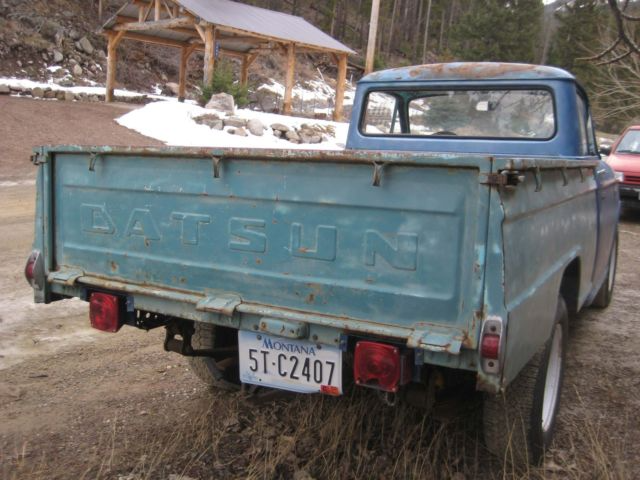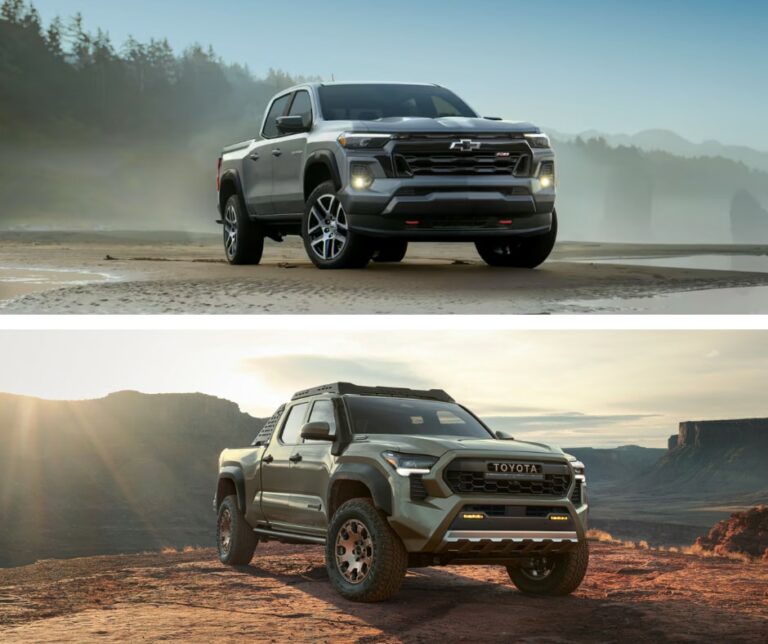Jeep Car Brand: An Enduring Icon of Adventure and Freedom
Jeep Car Brand: An Enduring Icon of Adventure and Freedom cars.truckstrend.com
In the vast landscape of automotive brands, few command the reverence, loyalty, and sheer iconic status of Jeep. More than just a collection of vehicles, Jeep represents a spirit, a lifestyle, and a relentless pursuit of adventure. From its humble origins as a wartime workhorse to its current standing as a global symbol of off-road capability and freedom, the Jeep brand has etched an indelible mark on the automotive world. This article delves deep into the essence of Jeep, exploring its rich history, defining characteristics, diverse lineup, and what it truly means to be part of the Jeep family.
A Legacy Forged in War: The Birth of an Icon
Jeep Car Brand: An Enduring Icon of Adventure and Freedom
The story of Jeep begins not on a designer’s drawing board for a commercial product, but in the crucible of World War II. As the United States prepared for conflict, the military sought a lightweight, rugged, four-wheel-drive reconnaissance vehicle capable of traversing any terrain. Over 135 manufacturers were invited to submit proposals, but it was Willys-Overland that delivered the winning design – the Willys MB. Later, Ford also produced a similar version, the GPW, under license to meet demand. These vehicles, affectionately known as "Jeeps" (a moniker whose exact origin is still debated, but likely derived from the phonetic pronunciation of "GP" for General Purpose), proved indispensable on battlefields worldwide, demonstrating unparalleled durability and versatility.
After the war, with millions of soldiers returning home, the civilian potential of this rugged vehicle became clear. Willys-Overland quickly adapted the military design into the Willys CJ (Civilian Jeep), marking the birth of the consumer brand. Over the decades, Jeep changed hands multiple times – from Kaiser-Jeep to American Motors Corporation (AMC), then to Chrysler, DaimlerChrysler, Fiat Chrysler Automobiles (FCA), and now Stellantis. Through all these transitions, the core identity of Jeep – its ruggedness, capability, and spirit of adventure – remained steadfast, evolving but never compromising its foundational principles.
The Pillars of Capability: What Defines a Jeep?
What sets a Jeep apart from other SUVs or 4×4 vehicles? It’s a combination of design philosophy, engineering prowess, and a unique cultural phenomenon.
Off-Road Prowess: The Heart of the Brand
At the core of every Jeep is an unwavering commitment to off-road capability. This isn’t just about having four-wheel drive; it’s about engineering that allows these vehicles to tackle the most challenging terrains. Key elements include:
- Advanced 4×4 Systems: Jeep offers a range of sophisticated 4×4 systems like Command-Trac (part-time), Selec-Trac (full-time), and the legendary Rock-Trac (found in Rubicon models, offering extreme low-range gearing). These systems provide superior traction and control in various conditions, from slippery roads to rocky trails.
- Articulation and Ground Clearance: Jeeps are designed with exceptional suspension articulation, allowing wheels to maintain contact with uneven surfaces, and high ground clearance to navigate obstacles without scraping the undercarriage.
- Approach, Breakover, and Departure Angles: These critical geometric measurements dictate a vehicle’s ability to climb, traverse, and descend steep obstacles without body contact. Jeeps are engineered with impressive angles, particularly the Wrangler.
- Trail Rated® Badge: This distinctive badge, awarded only to vehicles that pass a series of rigorous off-road tests, serves as a testament to a Jeep’s capability (more on this below).

Design Philosophy: Rugged and Iconic
Jeep’s design language is instantly recognizable and deeply rooted in its utilitarian origins. The iconic seven-slot grille, round headlights (on most models), trapezoidal wheel wells, and rugged, boxy proportions convey a sense of strength and purpose. Even as models become more refined, they retain design cues that pay homage to the brand’s heritage.
Community & Lifestyle: More Than Just a Car
Perhaps one of the most unique aspects of the Jeep brand is its vibrant and passionate community. Owning a Jeep often means becoming part of a global family. The "Jeep Wave" – a friendly greeting exchanged between Jeep drivers – is a common sight. Jeep clubs, off-road events, and a thriving aftermarket industry for customization are all testaments to the deep connection owners feel with their vehicles and each other. It’s not just a mode of transport; it’s a vehicle for adventure, camaraderie, and self-expression.
Exploring the Lineup: Types and Categories of Jeep Vehicles
Over the years, Jeep has expanded its portfolio to cater to a wider range of needs while retaining its core identity. Here’s a look at the main categories:
-
The Wrangler (JL/JK/TJ/YJ/CJ): The Quintessential Off-Roader
- Description: The direct descendant of the original military Jeep, the Wrangler is the most capable off-road vehicle in the lineup. It features solid axles, removable doors, a fold-down windshield, and a removable roof (soft top, hardtop, or Sky One-Touch power top). Available in two-door and four-door (Unlimited) configurations.
- Key Trims: Sport (base), Sahara (more comfort/tech), Rubicon (extreme off-road capability with locking differentials, disconnecting sway bars, and low-range gearing).
- Ideal For: Hardcore off-road enthusiasts, those seeking maximum customization, and drivers who value an open-air driving experience.
-
The Gladiator: The Wrangler-Based Pickup
- Description: Introduced in 2019, the Gladiator combines the open-air freedom and off-road prowess of the Wrangler with the utility of a mid-size pickup truck. It shares many components with the Wrangler JL.
- Ideal For: Those who need the versatility of a truck bed but don’t want to sacrifice legendary Jeep capability.
-
Cherokee and Grand Cherokee: The Refined SUVs
- Description: These models offer a balance of off-road capability, on-road comfort, and modern technology. The Grand Cherokee, in particular, has evolved into a premium SUV, offering luxurious interiors, powerful engines (including SRT/Trackhawk variants), and advanced safety features, while still retaining significant off-road chops, especially in Trailhawk trims. The Cherokee is a compact SUV offering similar versatility in a smaller package.
- Ideal For: Families, daily commuters who still want the option for adventure, and those seeking a blend of luxury and capability.
-
Compass and Renegade: The Urban Adventurers
- Description: These smaller, more compact SUVs are designed for urban environments but still offer available 4×4 systems and Trailhawk versions that are surprisingly capable off-pavement. They provide better fuel economy and a more car-like ride than their larger siblings.
- Ideal For: City dwellers, first-time Jeep owners, and those who desire Jeep styling and light off-road capability without the larger footprint or higher cost.
-
Wagoneer and Grand Wagoneer: The Return to Premium Luxury
- Description: Marking Jeep’s re-entry into the full-size, premium SUV segment, the Wagoneer and Grand Wagoneer offer opulent interiors, massive space, advanced technology, and powerful engines, aiming to compete with high-end luxury SUVs. They still retain a degree of Jeep capability with robust 4×4 systems.
- Ideal For: Large families, luxury buyers, and those who need substantial towing capacity and premium features.
The "Trail Rated" Badge: Understanding Jeep’s Off-Road Credibility
The distinctive "Trail Rated" badge found on many Jeep vehicles is not just a marketing gimmick; it signifies that the vehicle has undergone a series of rigorous tests to prove its off-road capability in five key areas:
- Traction: The ability to maintain momentum and grip on challenging surfaces like mud, sand, snow, or loose gravel. This involves testing the 4×4 system, locking differentials, and tire performance.
- Water Fording: The ability to navigate through water crossings of a certain depth, with features like sealed electrical connections and high air intake.
- Maneuverability: The ability to steer around obstacles, with tests focusing on steering systems, wheelbases, and turning radius.
- Articulation: The ability of the suspension to maintain wheel-to-ground contact over uneven terrain, ensuring stability and traction.
- Ground Clearance: The ability to clear obstacles without damaging the undercarriage, measured by approach, breakover, and departure angles.
A "Trail Rated" badge provides buyers with confidence that their Jeep is engineered and tested to perform capably in challenging off-road conditions, living up to the brand’s legendary reputation.
Owning a Jeep: Practical Advice & Considerations
Owning a Jeep is a unique experience, offering distinct advantages and some considerations.
Benefits:
- Unmatched Capability: For those who venture off the beaten path, a Jeep offers unparalleled performance.
- Strong Resale Value: Jeeps, especially Wranglers, tend to hold their value exceptionally well due to high demand and enduring appeal.
- Vibrant Community: Access to a passionate community of owners, events, and resources.
- Customization Potential: A massive aftermarket industry allows owners to personalize their Jeeps for performance, aesthetics, or specific off-road needs.
- Iconic Status: Driving a Jeep is a statement of adventure and individuality.
Challenges:
- Fuel Economy: While improving with newer powertrains and hybrid options, many traditional Jeep models, particularly the Wrangler, are not known for their fuel efficiency.
- Ride Comfort (Traditional Models): While newer models offer significantly improved on-road manners, the rugged design of Wranglers can result in a firmer ride and more road noise compared to conventional SUVs.
- Maintenance: While generally reliable, some specific components for off-road performance may require specialized knowledge for repairs or modifications.
Tips for Prospective Buyers:
- Assess Your Needs: Are you looking for a daily commuter with light trail capability (Compass, Renegade, Grand Cherokee Laredo), a balanced family SUV (Grand Cherokee), or a dedicated off-road machine (Wrangler, Gladiator)?
- Understand Trims: The difference between a Sport and a Rubicon Wrangler, for example, is vast in terms of off-road equipment and price. Research the specific trim levels and their features.
- New vs. Used: Used Jeeps can offer great value, but inspect them thoroughly for off-road damage or poorly executed modifications.
- Test Drive: Don’t just test drive on pavement. If possible, find a dealer with an off-road course or a safe, mild trail to experience the vehicle’s capabilities.
- Research 4×4 Systems: Understand the differences between Command-Trac, Selec-Trac, and Rock-Trac to choose the system best suited for your intended use.
Tips for Current Owners:
- Regular Maintenance: Adhere to the manufacturer’s maintenance schedule, especially if you regularly go off-road.
- Learn Off-Roading Basics: If you plan to use your Jeep for its intended purpose, invest time in learning proper off-road techniques to protect your vehicle and ensure safety.
- Join the Community: Connect with local Jeep clubs. They are a fantastic resource for advice, group outings, and camaraderie.
- Responsible Customization: If modifying your Jeep, research reputable brands and experienced installers to ensure safety and performance.
The Future of Jeep: Electrification and Innovation
Jeep is not resting on its laurels. Recognizing the shift towards sustainable mobility, the brand has embarked on an ambitious electrification strategy. The introduction of 4xe (PHEV – Plug-in Hybrid Electric Vehicle) models, such as the Wrangler 4xe and Grand Cherokee 4xe, signals a commitment to combining legendary capability with improved fuel efficiency and reduced emissions. Looking ahead, Jeep has unveiled plans for fully electric vehicles like the Jeep Recon and the Wagoneer S, promising to deliver zero-emission off-road adventure and premium performance, respectively. The brand aims to be the leading zero-emission SUV brand in the world, proving that its core values of freedom and adventure can coexist with environmental responsibility.
Jeep Car Brand: Estimated Price Range (MSRP – US Market)
Please note: These are estimated base MSRP ranges for new models and can vary significantly based on trim level, options, packages, region, dealership pricing, and current incentives. Prices are subject to change.
| Model | Starting MSRP (Approx. Low) | Starting MSRP (Approx. High – Top Trim) | Key Differentiating Factors |
|---|---|---|---|
| Jeep Renegade | $29,000 | $36,000 | Subcompact SUV, city-friendly, surprisingly capable Trailhawk trim. |
| Jeep Compass | $30,000 | $40,000 | Compact SUV, balanced daily driver with available off-road capability. |
| Jeep Cherokee | $38,000 | $41,000 | Compact SUV, more rugged than Compass, known for balancing comfort and trail performance (currently limited trims). |
| Jeep Wrangler | $32,000 | $85,000+ | Iconic off-roader, removable top/doors, wide range of trims (Sport, Sahara, Rubicon, 4xe, 392). Price varies wildly by trim. |
| Jeep Gladiator | $39,000 | $65,000+ | Wrangler-based pickup truck, open-air freedom, utility, and off-road prowess. |
| Jeep Grand Cherokee | $40,000 | $70,000+ | Mid-size SUV, refined, luxurious, versatile (Laredo, Limited, Overland, Summit, Trailhawk, 4xe). |
| Jeep Grand Cherokee L | $43,000 | $75,000+ | Three-row Grand Cherokee, increased passenger and cargo capacity, similar trim levels. |
| Jeep Wagoneer | $62,000 | $85,000+ | Full-size premium SUV, luxurious, spacious, strong towing capacity, standard 4×4. |
| Jeep Grand Wagoneer | $92,000 | $115,000+ | Ultra-premium full-size SUV, even more luxury, advanced tech, and powerful engine. |
Disclaimer: Prices are highly dynamic. Always check official Jeep websites or consult with a local dealership for the most current and accurate pricing for specific models and configurations.
Frequently Asked Questions (FAQ)
Q1: Is Jeep a reliable brand?
A1: Jeep’s reliability perception can vary. Historically, some models, especially older Wranglers, were known for a simpler, rugged design which could translate to fewer complex parts to break. Newer, more technologically advanced models generally perform comparably to other brands. Owners’ experiences often depend on maintenance and how the vehicle is used (e.g., heavy off-roading can accelerate wear). J.D. Power and similar studies provide objective data, which often place Jeep in the middle of the pack.
Q2: Are Jeeps good daily drivers?
A2: It depends on the model. The Compass, Renegade, Cherokee, and Grand Cherokee are designed to be comfortable and capable daily drivers. The Wrangler and Gladiator, while incredibly capable off-road, prioritize ruggedness, which can mean a firmer ride, more road noise, and less fuel efficiency for daily commuting compared to conventional SUVs. However, many owners happily use them as daily drivers due to their unique character and versatility.
Q3: What is the "Jeep Wave"?
A3: The "Jeep Wave" is a traditional greeting exchanged between Jeep owners on the road, typically by raising two or four fingers off the steering wheel or giving a slight nod. It’s a symbol of camaraderie and mutual respect among members of the Jeep community.
Q4: What does "Trail Rated" mean?
A4: "Trail Rated" is a badge awarded to Jeep vehicles that have successfully passed a series of rigorous tests in five key off-road performance categories: Traction, Water Fording, Maneuverability, Articulation, and Ground Clearance. It signifies that the vehicle is engineered and tested to perform exceptionally well in challenging off-road conditions.
Q5: Are Jeeps expensive to maintain?
A5: Maintenance costs for Jeeps are generally in line with other vehicles in their respective segments. However, if you frequently go off-roading, you might incur additional costs for wear and tear on suspension components, tires, or other parts. Customization and aftermarket modifications can also add to expenses. Parts availability is excellent due to the brand’s popularity.
Q6: Can I take any Jeep off-road?
A6: While all Jeeps are designed with some level of capability, not all are equally suited for serious off-roading. The Wrangler and Gladiator are purpose-built for extreme trails. Models like the Grand Cherokee, Cherokee, Compass, and Renegade, especially in their "Trailhawk" trims, offer significant off-road capability for light to moderate trails. Base models of these crossover-based Jeeps are more suited for unpaved roads or light snow than challenging rock crawling.
Q7: What’s the difference between Command-Trac, Selec-Trac, and Rock-Trac 4×4 systems?
A7:
- Command-Trac: A part-time 4×4 system primarily found in Sport and Sahara Wranglers. It allows for 2WD for everyday driving and 4WD High and 4WD Low for off-road use. It should not be used on dry pavement in 4WD as it can cause drivetrain binding.
- Selec-Trac: A full-time 4×4 system, often found in Grand Cherokees and some Wranglers. It automatically adjusts torque distribution between the front and rear axles, allowing it to be used on all surfaces, including dry pavement. It also includes 4WD Low.
- Rock-Trac: The most advanced 4×4 system, exclusive to Rubicon models. It’s a part-time system with an incredibly low 4:1 transfer case ratio (hence "4×1") for maximum torque at low speeds, ideal for rock crawling. It also features front and rear locking differentials and a disconnecting sway bar.
Conclusion
The Jeep Car Brand stands as a testament to enduring quality, iconic design, and an unwavering spirit of adventure. From its wartime origins to its present-day diverse lineup, Jeep has consistently offered vehicles that embody freedom, capability, and a unique connection to the outdoors. Whether you seek the ultimate off-road machine, a versatile family SUV, or a compact urban adventurer, there’s a Jeep designed to meet your needs. As the brand moves confidently into an electrified future, it promises to maintain its legendary identity, ensuring that the spirit of Jeep – "Go Anywhere, Do Anything" – continues to inspire generations of drivers. Owning a Jeep isn’t just about driving; it’s about embracing a lifestyle, joining a community, and embarking on endless possibilities.





